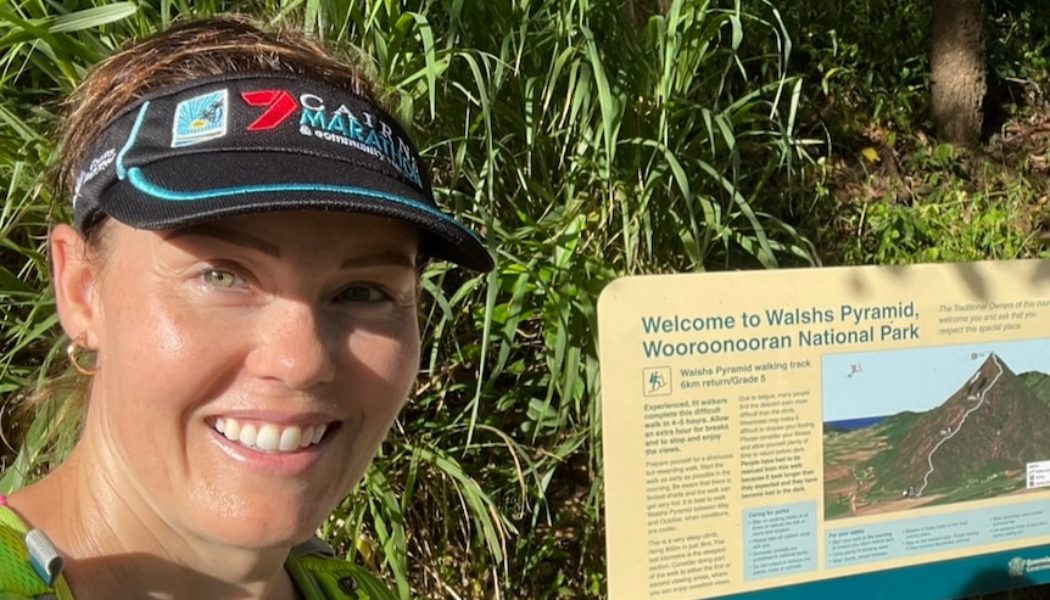Naomi Lewis has given birth to four children, but nothing prepared her for the excruciating and long-lasting pain of an encounter with a venomous stinging tree in Queensland’s far north.
She was mountain biking at Smithfield, near her Cairns home, when she came off her bike, left the trail and hurtled down an embankment, sliding into a stinging tree, known colloquially as a Gympie-Gympie plant.
The 42-year-old said the pain on both her legs — from where her shorts finished — was “100 per cent the worst pain ever”, describing the sensation as feeling like she had been set on fire.
“It was horrible, absolutely horrible,” she said.
“The pain was just beyond unbearable. The body gets to a pain threshold and then I started vomiting.
“I’ve had four kids – three caesareans and one natural. Childbirth, none of them even come close.”
Ms Lewis’s husband Richard drove her to a nearby pharmacy, where they bought leg wax to remove the fine hairs from the tree’s leaves and stems that had become embedded into her skin, injecting venom into her like tiny hypodermic needles.
They lay hair removal strips on the car bonnet, to heat the wax up.
“I had everyone trying to wax my legs, trying to get the stinging hairs off me, while I was waiting for an ambulance,” she recalled.
“I remember waiting for the ambulance and saying to my husband, ‘I can’t deal with this.'”
Ms Lewis was taken to the Cairns Hospital emergency department after the accident last June. There was little doctors could do for her other than provide pain relief and cover her legs with heated blankets.
“I was like, ‘Ooh, that’s slightly soothing,'” she recalled.
“So, then they just kept putting hot blanket on hot blanket.”
Ms Lewis was transferred to the Cairns Private Hospital, where she stayed for seven days, being treated with pain medication.
She went home with pain killers and “lived with heat packs strapped to my legs for a very long time”.
It was almost Christmas before she was able to wean herself off the medication.
And nine months after the accident, she still feels pain akin to someone “snapping rubber bands” on one section of her leg if the skin is exposed to air conditioning.
Popular swimming spot a common site for stings
A recent study, published in Emergency Medicine Australasia, analysed the cases of 48 people who presented to the Cairns Hospital emergency department after contact with a stinging tree, from the genus Dendrocnide, in the three years to mid-2019.
More than half of the cases occurred in visitors to Cairns.
Crystal Cascades, a favoured Cairns swimming hole, was responsible for 42 per cent of the patients.
While the research found a close encounter with the tree resulted in “severe and immediate pain”, there was no clear first aid or definitive treatment, other than pain relief.
Patients had tried a variety of pre-hospital therapies before going to the emergency department, including waxing, applying mud, urine, ice, bicarbonate, hot or cold water to the sting, taking paracetamol, using a tourniquet to the affected limb and drinking alcohol.
Cairns Hospital toxicologist Ruth Young, lead author of the study, said exposure to stinging trees, which grow in rainforests along Australia’s east coast between Cape York and southern NSW, resulted in “a significant burden of disease each year”.
Dr Young said reports on the best method to treat the stings included using heavily diluted hydrochloric acid on affected parts of the skin, with varying degrees of success.
“But without any proper scientific or medical analysis of these treatments, it’s dangerous for people to try them themselves without clinical oversight,” Dr Young said.
“The best thing anyone can do if they are stung is seek medical attention.”
Dr Young called for better public awareness of the stinging trees and the extremely painful consequences, if stung.
“In some of our parks and tourist sites, there are signs warning about the stinging tree,” she said.
“However, this has limited impact, as some of our patients were bushwalking away from these signs.”
Ms Lewis’s message after her close encounter is simple.
“Don’t go near them. Don’t touch them. It’s dangerous,” she said.








